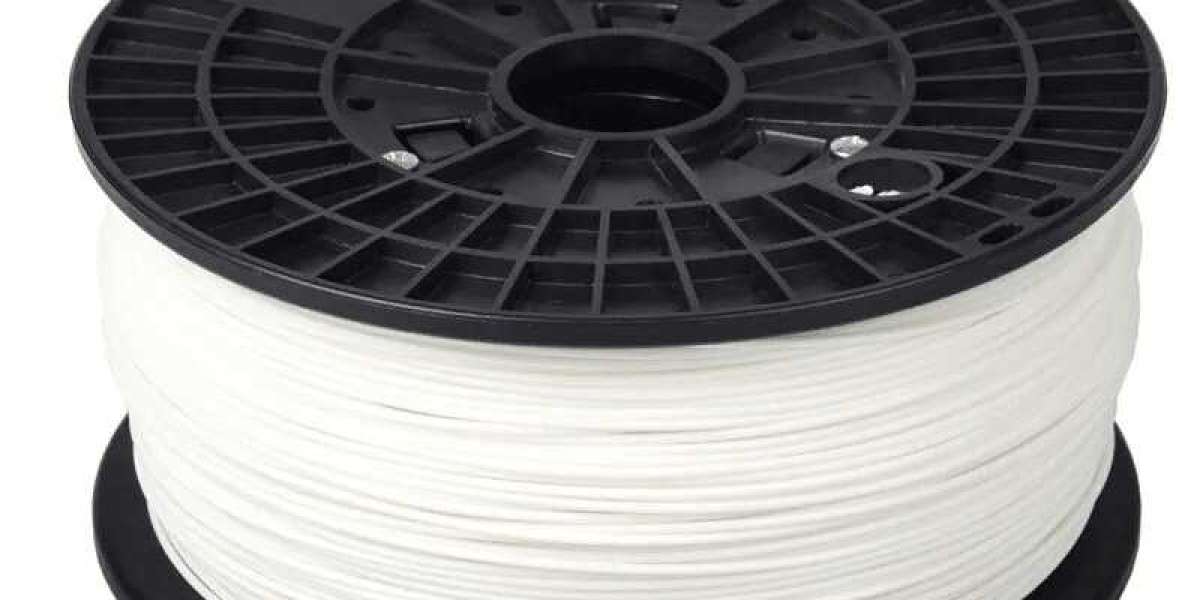Choosing the right printing material in 3d printing is crucial to the quality and performance of the final product.
First, we need to understand what PLA filament is.
PLA is a bio-based material that is polymerized from lactic acid produced by the fermentation of renewable resources such as corn starch or sugar cane. This material not only has good biodegradability, but also shows low thermal deformation characteristics during processing. The thermal deformation temperature of PLA filament is usually about 60 ° C, which is much higher than room temperature, which makes it stable at room temperature and not easy to deformation due to temperature changes.
The low thermal deformation of PLA filament is mainly due to its molecular structure.
The molecular chain of PLA contains a large number of ester groups, which gives PLA a high glass transition temperature (Tg), usually between 50℃ and 60℃. This means that at room temperature, PLA material is in a glassy state, with high rigidity and dimensional stability. Even at slightly higher temperatures, PLA filament can maintain a good shape and is not easy to soften or deform.
This low thermal deformation gives PLA filament a significant advantage in 3D printing.
First, it is able to maintain accurate size and shape during the printing process, which is especially important for applications requiring high-precision parts. For example, when manufacturing medical devices, models and precision parts, the low thermal deformation of PLA filament ensures dimensional stability and reliability of printed parts.
Second, the low thermal deformation of PLA filament also makes it more advantageous when printing large or complex structures. Because PLA is not easy to deform at high temperatures, it can maintain the stable work of the print head for a long time to avoid printing failure or accuracy reduction due to material deformation. This is especially important for structures that require multiple layers of printing, as the accuracy of each layer affects the quality of the final product.
In addition, the low thermal deformation of PLA filament also makes it more flexible in subsequent processing. Since PLA prints are not easy to deform at room temperature, post-processing operations such as cutting, drilling, and grinding can be performed without worrying about component deformation due to heat generated during operation. This gives designers and manufacturers more creative space and processing options.
In terms of application, the low thermal deformation of PLA filament makes it widely used in many fields.
For example, in the aerospace sector, PLA printed parts can be used to manufacture aircraft interior trim parts or other non-critical structural parts that require stability in a variety of temperature environments. In the automotive industry, PLA can be used to manufacture automotive interior parts, models and prototype parts. In addition, due to its good biocompatibility, PLA is also widely used in the medical field, such as manufacturing surgical guides, prosthetics and other medical devices.
Actual case 1: A well-known aerospace company uses PLA filament to print aircraft interior decorative parts. These decorative pieces need to maintain shape stability under extreme temperatures, and the low thermal deformation of PLA ensures the reliability of these parts in different climatic conditions.
Actual case 2: An automobile manufacturer uses PLA filament to print a prototype of automotive interior parts. The low thermal deformation of PLA material allows the prototype to remain dimensional stable during multiple modifications and tests, greatly shortening the product development cycle.
Practical case 3: In the medical field, a research institution uses PLA filament to print customized surgical guides. The biocompatibility and low thermal deformation of PLA material ensure the accuracy and safety of the surgical guide, providing a guarantee for the success of the operation.
In short, the low thermal deformation of PLA filament is one of its many excellent properties, which makes it have a wide range of applications in 3D printing technology. Whether manufacturing high-precision parts or printing large and complex structures, PLA filament provides stable and reliable performance. With the continuous development of 3D printing technology and the continuous expansion of application fields, the low thermal deformation of PLA filament will play an increasingly important role.








